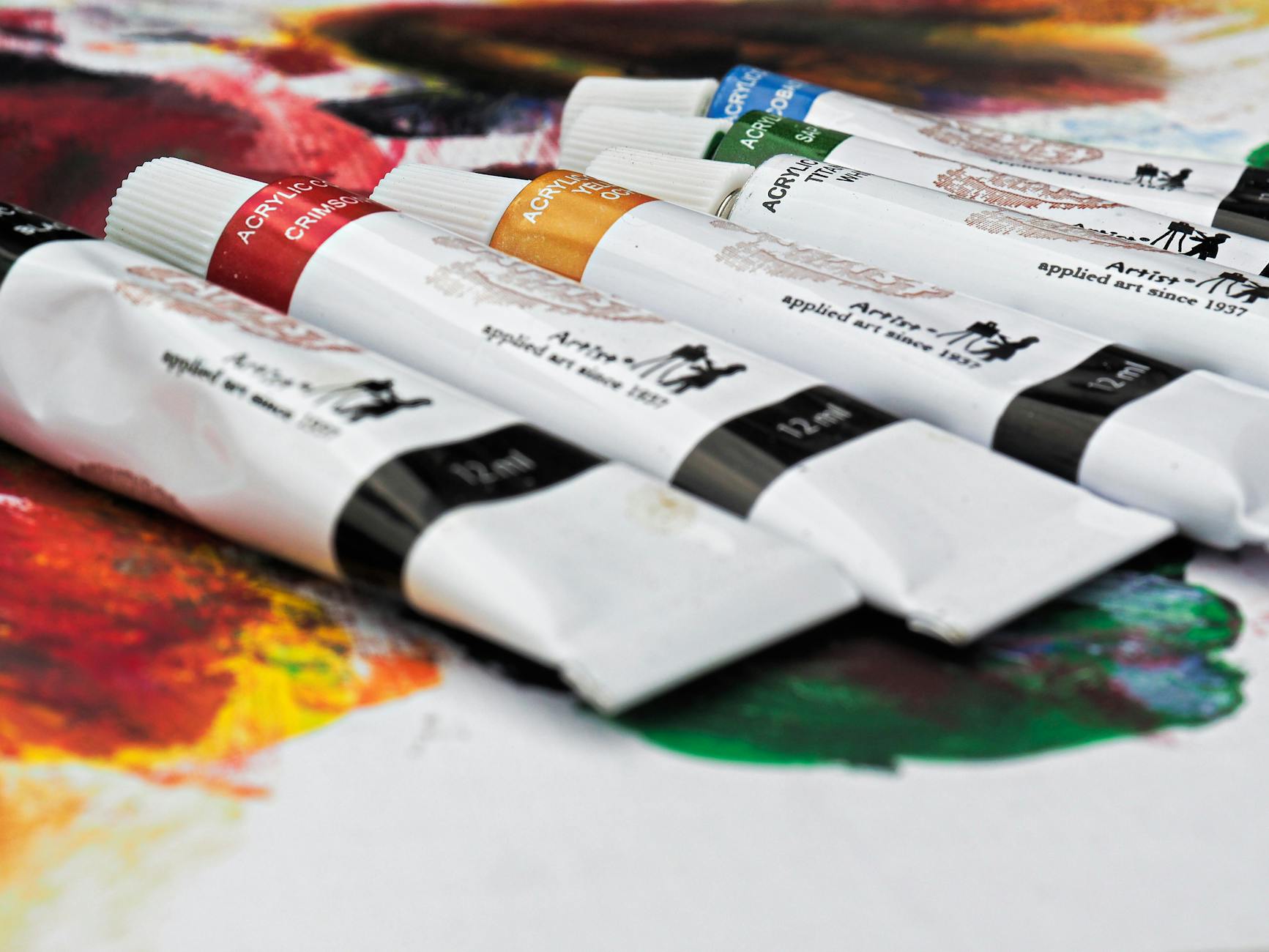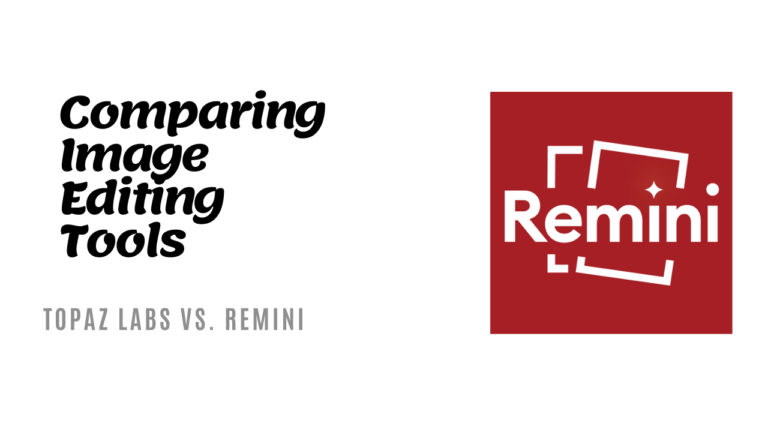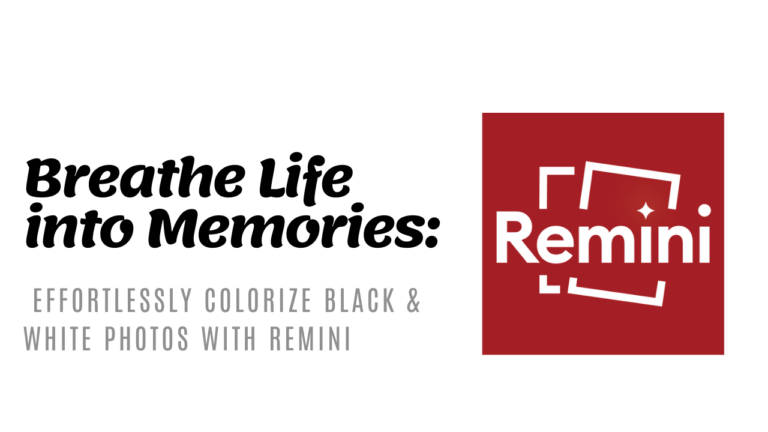Easily Upscale Low-Res Images for Stunning Prints

Ever stumbled upon an old photo or a low-res image you desperately wanted to print in a larger format, but were worried about losing clarity? You’re not alone. Many users of the Remini app face the same challenge of upscaling images without compromising on quality. In simple terms, upscaling is the process of increasing the resolution of an image while maintaining as much of the original detail and quality as possible.
This post will guide you through practical methods and tools to transform your low-resolution images into high-quality prints ready for any occasion. Let’s dive into how you can achieve clear, vibrant prints from those not-so-perfect images!
Understanding Image Upscaling for Printing
In the realm of printing, image upscaling plays a crucial role in enhancing the quality of visual content. When preparing images for printing, it’s essential to understand the process of upscaling to ensure optimal results. Let’s explore the key factors and tools related to image upscaling for printing.
Key Factors in Image Upscaling
When upscaling images for printing, two key factors to consider are resolution and quality preservation.
- Resolution: The resolution of an image determines the level of detail and sharpness. When upscaling for printing, ensure the image’s resolution is sufficient to maintain clarity and prevent it from appearing pixelated or blurry.
- Quality Preservation: Maintaining the quality of the image during upscaling is vital. Look for tools that use advanced algorithms to enlarge images without compromising sharpness or introducing artifacts.
Tools and Software for Image Upscaling
Several tools and software are available to effectively upscale low-resolution images for printing. Here are some popular choices:
- Adobe Photoshop: A versatile software that offers advanced image upscaling features to enhance image quality for printing purposes.
- Topaz Gigapixel AI: Utilizes artificial intelligence to upscale images while preserving sharpness and details, ideal for high-quality printing.
- Let’s Enhance: An online tool that uses neural networks to enhance image resolution, suitable for improving print quality.
By leveraging these tools and considering essential factors like resolution and quality preservation, you can successfully upscale low-resolution images for optimal printing results.
 Photo by Ulrich Scharwächter
Photo by Ulrich Scharwächter
Best Practices for Upscaling Low-Resolution Images
In the world of printing, ensuring your images are of high resolution is vital to achieving top-notch print quality. Let’s explore some best practices to upscale low-resolution images effectively.
Choosing the Right Resolution for Printing
When preparing images for printing, selecting the correct resolution is key to maintaining clarity and sharpness. The optimal resolution can vary depending on the size of the print. For smaller prints like postcards or flyers, a resolution of 300 DPI (dots per inch) is recommended to capture fine details.
For larger prints such as posters or banners, a resolution of 150 DPI may be sufficient. Always consider the viewing distance of the final print – images meant to be viewed up close require higher resolutions for better quality.
Utilizing AI Technology for Image Enhancement
Artificial Intelligence technology has revolutionized image enhancement, especially in the realm of upscaling low-resolution images. AI algorithms can analyze image data and extrapolate details to enhance the overall quality when scaling up.
Tools like Topaz Gigapixel AI and Let’s Enhance utilize AI to intelligently enhance image resolution without losing quality. By leveraging AI technology, you can significantly improve the results when upscaling images for printing.
 Photo by George Milton
Photo by George Milton
Comparing Different Upscaling Techniques
When it comes to upscaling low-resolution images for printing, it’s crucial to understand the various techniques available. Let’s delve into the comparison between traditional upscaling methods and AI-driven upscaling technologies tailored for printing purposes.
Traditional vs. AI-Based Upscaling
Traditional upscaling methods involve basic algorithms that interpolate pixel information to increase image size. While adequate for some purposes, traditional upscaling may lead to blurry or pixelated results when significantly enlarging images for high-quality printing. On the other hand, AI-based upscaling leverages advanced machine learning algorithms to analyze image content and intelligently enhance resolution while preserving sharpness and details.
AI-driven upscaling technologies, such as neural networks, can produce remarkable results by predicting and adding missing information for optimal print quality.
Upscaling Tips for Specific Print Types
- Posters: When upscaling images for posters, consider the viewing distance. Images intended for close viewing should undergo high-resolution upscaling to maintain clarity and vibrancy. Pay attention to color accuracy and contrast to ensure the final printed poster is visually appealing.
- Banners: For banners, focus on scalability without compromising image quality. Use AI-based upscaling tools to enhance images without distortion, especially for large-format banners. Prioritize sharpness and edge definition to create impactful visuals that stand out.
- Photographs: When upscaling photographs for printing, emphasize preserving the original image’s clarity and texture. AI-based upscaling can enhance details like facial features, textures, and backgrounds, making printed photographs visually striking. Adjust color saturation and brightness for optimal print results that mirror the original photograph’s essence.
Utilizing AI-driven upscaling methods tailored to specific print types can significantly enhance the visual appeal and quality of printed materials, ensuring your images look sharp and professional across various formats.
Ensuring Quality in Upscaled Images
In the realm of upscaling low-resolution images for printing, ensuring quality is paramount to achieving crisp and clear results that captivate the eyes. Let’s delve into key practices that can help you maintain the highest standards in your upscaled images.
Preventing Pixelation and Artifacts
Pixelation and artifacts can mar the visual appeal of your printed images, making them appear blurry and distorted. To prevent these unwanted imperfections, it’s pivotal to use advanced upscaling software that employs sophisticated algorithms to interpolate additional pixels intelligently.
By choosing the right upscaling tool, you can minimize pixelation and artifacts, ensuring that your images retain their clarity and sharpness.
Ensuring that your original image is of the highest quality possible before upscaling is also crucial. Start with the best source material to minimize the risk of pixelation and artifacts. Additionally, avoid enlarging images by excessive amounts, as this can exacerbate pixelation. By taking these proactive measures, you can enhance the quality of your upscaled images and create stunning prints that do justice to your visuals.
Testing and Proofing Upscaled Images
Before finalizing your upscaled images for printing, thorough testing and proofing are essential to guarantee optimal results. One effective method is to print a small sample of the upscaled image on the intended medium to assess the quality up close. This allows you to spot any remaining artifacts, pixelation, or discrepancies that may have gone unnoticed on-screen.
Another approach is to zoom in on the upscaled image at 100% magnification on your computer to scrutinize details and ensure that the upscaling process hasn’t introduced any unwanted visual distortions. By meticulously testing and proofing your upscaled images through these methods, you can identify and rectify any issues before sending them for printing, ensuring a flawless final outcome.
Photo by Pixabay 
Conclusion
In the world of printing, the ability to upscale low-resolution images can make a significant impact on the quality of your final prints. By utilizing advanced algorithms and tools, you can effectively enhance the resolution of your images, ensuring that they look crisp and clear when printed.
Whether you are a photography enthusiast looking to print your favorite memories or a graphic designer working on a project, understanding how to upscale low-resolution images for printing is a valuable skill to have in your toolkit.
With the plethora of tools and techniques available, you have the power to transform your low-res images into high-quality prints that capture every detail and nuance. Remember, the key lies in finding the right balance between upscaling the image for print quality without sacrificing the integrity of the original content.
Experiment with different methods, adjust settings, and always preview your prints before finalizing to ensure the best possible outcome.
 Photo by Ann H
Photo by Ann H





